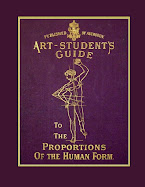
Petrus Camper (1769-1832) was a Dutch anatomist, anthropologist, sculptor and patron of the arts. He did pioneering work in comparative anatomy which we can use in learning how to draw the head.
He demonstrated the relationships between all organisms by a mechanical system he called metamorphosis.
He headed into controversy with a theory that the facial angle correlated with intelligence, extrapolating from various species, as the first plate illustrates. These plates are from:
Dissertation sur les différences des traits du visage.

He is another example of the anatomists of his time who studied painting and drawing and illustrated all his own books. He also is an example of the thinking of the time in his effort to classify the races by some system. A German, Professor John Friedrich Blumenbach, emphasized skin color. Camper emphasized bone structure. Anthea Callen in
The Spectacular Body: Science, Method, and Meaning in the Work of Degas, notes that theories of evolution predate both Darwin's Theory of Natural Selection and the 19th Century's Social Darwinism and go back to Thomas Hobbe's idea of competition as a fundamental social principal and that racism was prevalent in 17th century thinking. Camper was not alone in positing the Greek ideal in anatomy. (See
The Sculptor and Art Student's Guide to the Proportions of the Human Form - By Dr. Johann Gottfried Schadow and
Hieroglyphic or Greek Method of Life Drawing - By Adolphe Armand Braun.)


With any luck the events of this week will turn the page on the Hobbesian ideals and Social Darwinism.
Here is a link to a page on characture that refers to his work as it relates to drawing:
Corps idéal, imitation de la nature et caricature au XVIIIe et XIXe siècles. Quelques aspects des connexions entre sciences et arts. I think that is a more appropriate use of his studies than the misguided theories of intelligence.
This is a link to the complete book on the web from the Bibliothéque Interuniversitaire de Médicine et d'Ontologie - Collection de rééditions de textes anciens.
Camper, Petrus.
Dissertation physique: sur les différences réelles que présentent les traits du visage chez les hommes de différents pays et de différents âges.
These plates are from the following chapters:
Quatrième partie. Sur les premiers principes à l'aide desquels on peut ébaucher une tête convenablement.
Chapitre premier. Sur l'ovale.
Chapitre second. Sur la méthode du triangle considérée comme moyen d'ébaucher une tête vue de profil.
Chapitre troisième. Sur une nouvelle manière de dessiner les têtes.


This is a page which takes Camper's work and turns the studies of relationships between organisms and the studies of aging into animations:
Petrus Camper -Metamorphosis.
A page from the University of Groningen in the Netherlands which give a very positive biography:
A more critical page from Finland (Modern birth of racism):
Modernin rasismin synty - Petrus Camper. He developed the so-called facial angle measurement. It is the angle formed by two lines. The one passing to the nose and upper lip the second along the line of the jaw and a parallelogram formed by a third line through the ear-hole.
A link to a page on the Missing link postulated by Marie Eugène François Thomas Dubois who also published a book about Camper that included a photo of his reconstruction of the "Missing Link" exhibited at the Paris World's Fair in 1900:
Contributions to Zoology.
 Facial Geometry: Graphic Facial Analysis for Forensic Artists
Facial Geometry: Graphic Facial Analysis for Forensic Artists




































